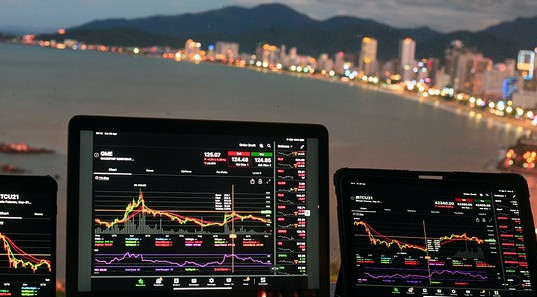In this post we are going to consider the key factors in building an option trade. We will cover the importance of option entry, and discuss the key factors to consider, when setting up a trade. We’ll discuss why these factors are important and finally, we’ll see how to apply these factors to an actual example using the tasty trade brokerage platform.
Building an Option Trade
Order Entry
When building an options trade, it’s important to realize that you control everything on order entry. In fact order entry is all you can control. Whether you invest in stocks, mutual funds ETF’s, bonds, or commodities, the Order entry is key to placing a trade. After entry, the market is going to do what it does and the trader has little to no control over it. Having good management skills is the best way to increase your probability of success.
The key factors to consider, when Building an Option Trade
- Trade only highly liquid underlying securities
- Consider the ideal implied volatility environment
- Develope the highest probability trade available consider your risk profile (Delta)
Why these factors are important
When taking a directional bias, a bullish strategy profits when the underlying increases in value and a bearish strategy profits when the underlying decreases in value. These are the two main assumptions used in stock trading; if you are long and the stock goes up, you profit from the trade and if you are short and the stock goes down, you profit here also.
Options have a third directional assumption, which, if used properly can help you profit also. This is the neutral strategy. With this strategy you profit from underlying price stability.
The nex factor to consider is implied volatility. Implied volatility (IV) is the measure of the future movement in a particular underlying. A related idea and one used by many platforms is Implied Volatility Rank (IVR). IVR tells us the relative level of current IV over the past year. By looking at the IVR, we can determine how wide a range of price movement is likely for a given underlying. If we know the expected price range for Apple over the course of the next 45 days, we could set up a strategy that could profit, if the price of Apple stays within that range over that time frame.
Next is the time frame, during which we want to place the trade. All options trade for a specified period of time. Generally, the longer the the time frame, the higher the probability of profit.
Lastly, we consider the risk profile. Risk is measured in Delta and Delta is the probability of an option being in the money (ITM) by expiration. The closer the options strike price is to the price of the underlying ,the higher the probability of the option being ITM by expiration.
This may seem like a lot to think about when building an option trade, but, when you get to doing it, the steps become fairly routine.
How to use these factors to Build an Options Trade trade
So, how do we put this together? You will find that all these factors are important when building a trade, but they don’t always occur in the same order. It isn’t a precise step by step recipe. These are the ingredients. But the order in which they go into the bowl varies from cake to cake.
Let me show you how I would set up my trade in Apple (AAPL).
As I review the available data, I see that AAPL is trading at all time highs. This could lead me to consider that the price of apple could be in for a pullback. Next I check the IVR (Implied Volatility Rank) and see it is 31.9. A IVR above 30 tells me that a premium selling strategy is appropriate. Next I see that the expected move in the the 55 day cycle is +/- $21.00. With AAPL trading at $288,37 the IV is telling me that the expected move of (AAPL) has a 68% probability of trading in the range of $268 -$310 between today and February 21, 2020. Since I am neutral to bearish, I decide to put on a neutral strategy. I am looking for the price of AAPL to remain inside the expected range until expiration. Since I am uncertain of the move I choose a defined risk strategy. There are a number of defined risk strategies to choose and I’ll be covering them in future posts. My final decision is to decide how much risk I want to take. The closer I place my strikes to the money, the more risk I am taking. The higher the risk, the higher the reward. Risk and reward are inextricably woven together. Options give the trader the opportunity to build a trade in many ways to suit their risk/reward profile.
If you would like me to help you with a trade, please leave a comment and I’ll get back to you right away.
Also, please leave a comment at the bottom and tell me if this has been helpful.






Hi, Danielle,
Thank you for your generous comment. I am glad to know you found value in our communication. I am curious to know how it was that you got into the trade we discussed. Generally, I have found that “Buying” options is not a particularly fruitful endeavor. My approach favors selling premium in the positions I enter
If you care to share, I’m sure others would benefit from haring about your experience..
I found Dan on a Facebook search for Options Trading for Beginners. In a panic, I took the chance that he might respond to my question sooner than getting accepted to a few other groups on the subject. He messaged back almost immediately, and was very kind as we sorted out my spotty info on the Robinhood App. Terminology that is different makes things scarier, but he was able to figure out what I had done and give me ‘options’ for how to respond to my situation. Glad I found this blog as well in my process. I have only begun reading now, and will be slowing down until I feel more in control. Subscription advice is only good if your paid subscription gives follow up. Lesson learned.